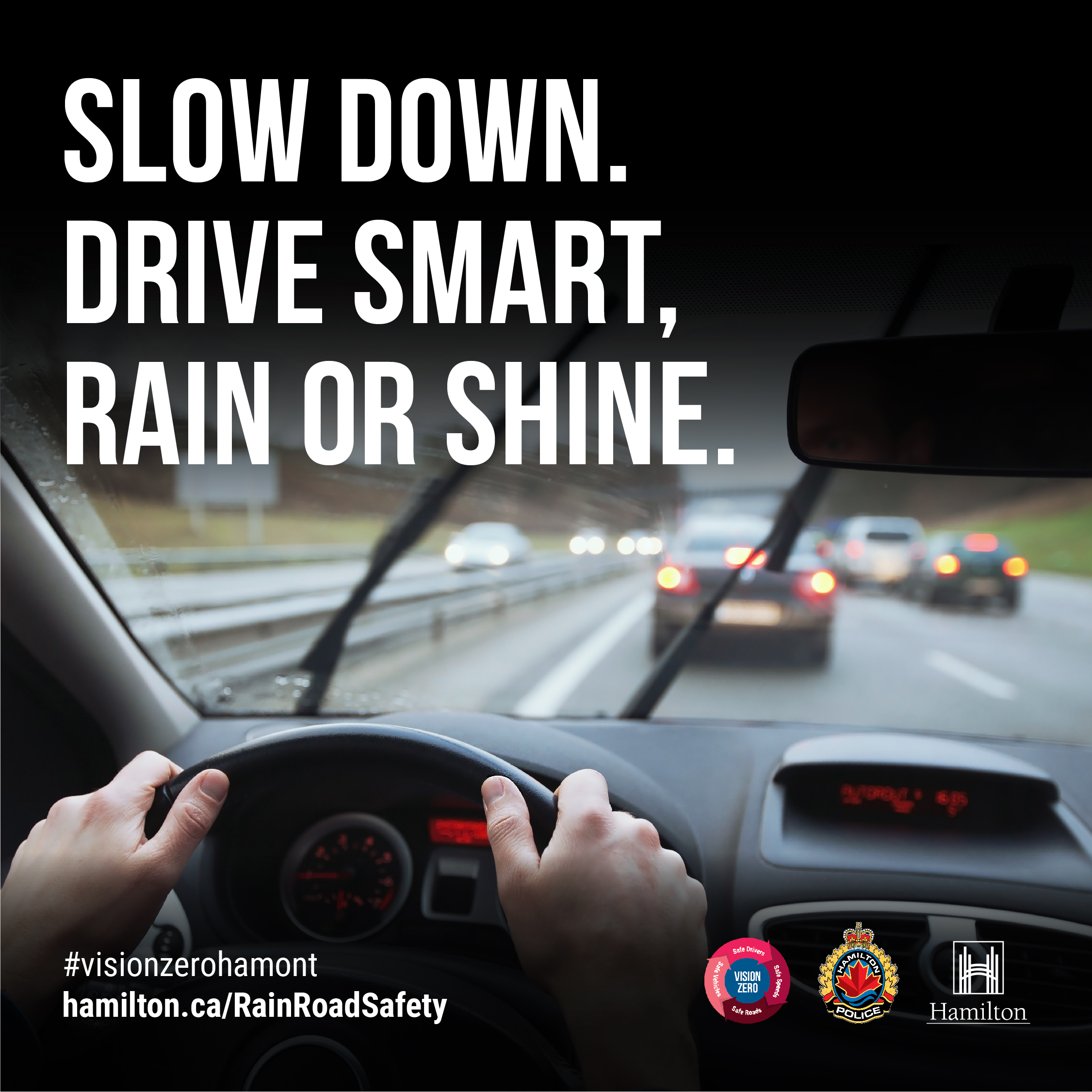Rain Road Safety
Drive Smart, Rain or Shine
Driving in rainy weather demands heightened caution and preparation, aligning perfectly with Vision Zero's commitment to eliminating traffic fatalities. Rain-slicked roads can be especially challenging, but by adhering to these vital safety tips, you not only safeguard yourself but also contribute to the collective goal of safer roads for all.
Slow Down for Safety
Rainy conditions reduce your vehicle's grip on the road, making it crucial to reduce your speed. Slowing down allows for better control and shorter stopping distances, reducing the risk of accidents.
Following Distance
Maintain a safe following distance from the vehicle in front of you. In wet conditions, it takes longer to stop, so a larger gap provides more time to react if the vehicle ahead brakes suddenly.
Whenever you follow another vehicle, you need enough space to stop safely if the other vehicle brakes suddenly. A safe following distance is at least two seconds behind the vehicle in front of you. This lets you see around the vehicle ahead and gives you enough distance to stop suddenly.

Remember that the two-second rule gives a minimum following distance. It applies only to ideal driving conditions. You will need extra space in certain situations, such as bad weather, when following motorcycles or large trucks, or when carrying a heavy load.
Visibility Matters
Turn on your headlights, even during daylight hours, to improve visibility. Additionally, make sure your windshield wipers and defrosters are in good working condition to keep your windshield clear.
Smooth and Gradual Maneuvers
Avoid sudden movements, such as sharp turns, abrupt braking, or rapid acceleration. Smooth and gradual maneuvers help maintain control on slippery roads.
Hydroplaning Awareness
If you experience hydroplaning (losing traction on the road surface due to water buildup), remain calm. Ease off the gas, keep your steering wheel steady, and steer in the direction you want to go. Avoid sudden movements.
Tire Maintenance
Regularly check your tires' tread depth and inflation. Properly maintained tires provide better traction, especially in wet conditions.
No Cruise Control
Avoid using cruise control when it's raining. You need to maintain full control over your vehicle's speed and acceleration to react to changing road conditions.
Stay Informed
Stay updated on weather forecasts before starting your journey and keep an eye on weather conditions while driving. If conditions deteriorate significantly, consider delaying your trip or finding a safe place to pull over.
Driving in the rain requires extra attention and caution, but by following these safety tips, you can reduce the risk of accidents and ensure a safer journey for yourself and others. Remember, it's essential to adapt your driving to the weather conditions, so you can drive smart, rain or shine.
